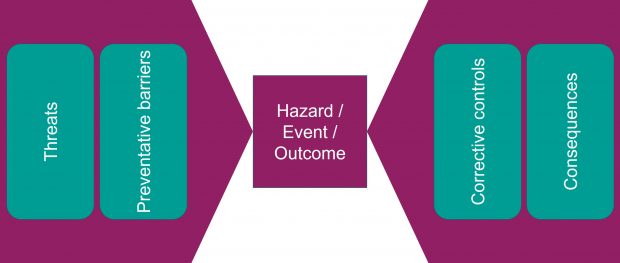
Now, here’s a question for you. When is a bow tie not a bow tie? The answer is when it’s used to describe a type of risk management approach. Still not clear? Let me explain.
Integrated risk management
The purpose of integrated risk management (IRM) is to ensure that the risk a pension scheme is exposed to is appropriate to its objectives and risk appetite. The Pensions Regulator introduced the IRM framework to help assess and manage the 3 main risks which can affect these types of pensions. They are:
- investment risk – the risk that the scheme’s investments will give a lower return than forecast
- funding risk – the risk that the scheme will become underfunded, with the value of its liabilities greater than the value of its assets
- employer covenant risk – the risk that the employer becomes unwilling or unable to pay liabilities as they fall due
IRM essentially requires pension schemes to look at these risks in the round, rather than considering each individually. This is because the risks are related – for example, funding risk is likely to be linked to either investment risk or employer covenant risk.
Considering the 3 risks together and in the round does not mean that less risk should be taken. The Pensions Regulator is clear that the benefits of taking on more risk should be considered within the IRM framework.
Benefits and savings
As you might expect, there are costs (of both time and money) in setting up an IRM framework so it’s usually more suitable for larger schemes. In the long run, though, this could lead to savings through more efficient advice and decisions helping to meet performance objectives.
Smaller schemes, with limited budgets, can also gain some of the benefits of implementing IRM. And it’s worth noting there are various approaches which seek to standardise and ease the implementation of the IRM tool.
Scheme investment returns
So far, so good. The benefits of this approach mean risks are constantly monitored, and trustees can – and do – look for new opportunities to mitigate these risks and put contingency plans in place.
This brings me back to the bow tie and no, I hadn’t forgotten! The ‘risk bow tie’ is an approach that's applied more widely in the identification and management of any type of risk.
An example could be when the Civil Aviation Authority advocates using this approach to assess safety management systems. And, as you can see, it’s so-called because the diagram which sets it all out is loosely based on the shape of a bow tie.

The centre of the diagram, the ‘knot’, shows the impact of events. Then on each side of the knot we see how these events can be managed by preventative and corrective controls.
Applied to funded pension schemes, the ‘risk bow tie’ can set out what trustees or managers of schemes need to do to make sure the risks which can be associated with defined benefit pension schemes are identified and mitigated.
So, if your (risk) bow tie looks like it may be coming undone, come and see GAD!
